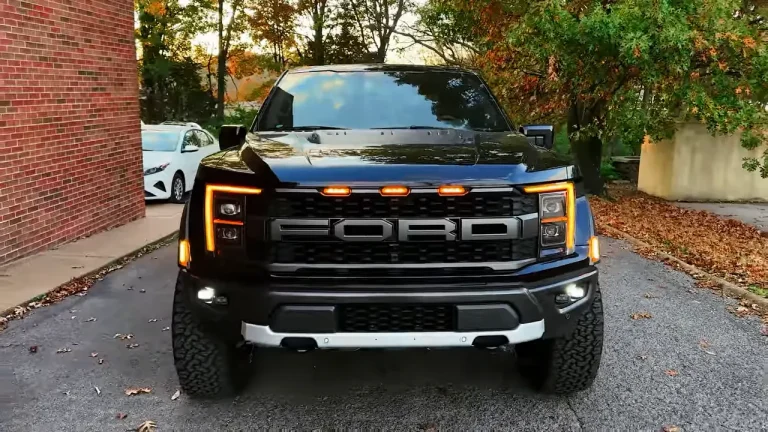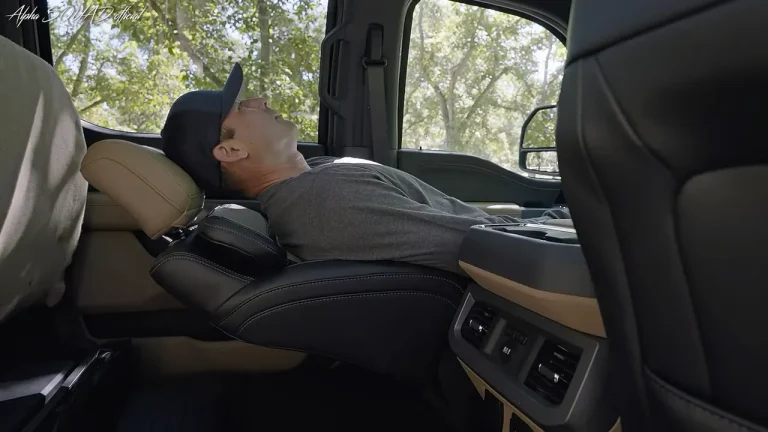Why Are My Car Headlights Not Bright Enough?
If your car headlights seem dim, you might be dealing with bulb wear, electrical issues, or lens fogging. The key to solving this problem is understanding what causes dim headlights and then taking the appropriate steps to fix them.
Common Reasons for Dim Car Headlights
1. Aging Bulbs
Over time, car headlight bulbs can wear out, leading to diminished brightness. This is especially true for halogen bulbs, which lose intensity as they age. If your headlights seem dimmer than usual, check the age of your bulbs.
- Tip: Replace bulbs every 2 to 3 years for optimal brightness. Always replace them in pairs to ensure even lighting.
2. Dirty or Foggy Headlight Lenses
Headlight lenses can become cloudy due to dirt, oxidation, or weather conditions. This cloudiness reduces light output and can make headlights appear dim.
- Fix: Clean your headlight lenses with a polishing kit or a DIY mixture of baking soda and water. For more serious clouding, consider professional restoration.
3. Electrical Problems
Faulty wiring, bad connections, or weak alternators can affect headlight brightness. If cleaning and bulb replacement don’t help, you might have an electrical issue.
- Solution: Have a professional mechanic inspect your car’s electrical system. They can check for frayed wires, corroded connectors, and other potential issues.
4. Faulty Headlight Adjustments
If your headlights aren’t properly aligned, they might not illuminate the road effectively, leading to perceived dimness.
- Adjustment: Follow your car’s manual for headlight alignment instructions or seek professional assistance. Proper alignment ensures maximum visibility and safety.
5. Aftermarket Modifications
If you’ve installed aftermarket headlight systems, they may not be compatible with your vehicle’s electrical system, leading to issues with brightness.
- Caution: Ensure all aftermarket parts are compatible with your car model. Improper installations can lead to reduced headlight performance or electrical problems.
How to Improve Headlight Brightness
A. Upgrade Your Bulbs
Consider upgrading to brighter, longer-lasting bulbs like LED or HID. These bulbs offer enhanced brightness and can be more energy-efficient than traditional halogen bulbs.
- Note: Before upgrading, check your local regulations and ensure your car’s wiring system can handle the additional load from brighter bulbs.
B. Regular Maintenance
Regularly clean your car’s headlights and check them for alignment. Keep an eye on your car’s electrical system to ensure it’s functioning properly.
- Advice: Incorporate headlight checks into your routine vehicle maintenance. This proactive approach can help prevent future issues.
How can I make my car headlights brighter?
To make your car headlights brighter, you need to address both the bulb type and the condition of your headlight system. Here’s a step-by-step guide to help you achieve brighter headlights:
1. Upgrade Your Bulbs
Switch to more efficient and brighter bulb types like LED or HID. These types generally offer improved light output compared to traditional halogen bulbs.
- LED Bulbs: Known for their brightness and longevity, they consume less power and often come with a white-blue hue, providing better visibility.
- HID Bulbs: High-intensity discharge bulbs are very bright and produce a distinctive blue-white light.
Important: Before upgrading, ensure that the bulbs you choose are compatible with your vehicle and meet legal requirements in your area. Some upgrades might require additional hardware or modifications to your car’s electrical system.
2. Clean the Headlight Lenses
Over time, headlight lenses can become cloudy due to oxidation and UV exposure, reducing light output.
- Polishing Kits: Purchase a headlight restoration kit to polish the lenses and remove cloudiness. This can significantly improve brightness.
- DIY Solution: Mix baking soda with water to form a paste and use it to scrub the lenses. This is an effective, budget-friendly way to clean them.
3. Align the Headlights
Misaligned headlights can reduce their effectiveness, leading to perceived dimness.
- DIY Adjustment: Your car’s owner’s manual should provide instructions for aligning the headlights. Generally, it involves adjusting the screws that control the headlight angle.
- Professional Adjustment: If you’re unsure about doing it yourself, visit a mechanic or a car service center to get your headlights properly aligned.
4. Check for Electrical Issues
If you have dim headlights despite clean lenses and upgraded bulbs, there could be underlying electrical issues.
- Inspect Connections: Check for corroded or loose connections. These can impact power delivery to the headlights.
- Test the Alternator: A weak alternator might not provide sufficient power to the headlights. If this is the case, it will need replacement.
- Consult a Professional: If you suspect electrical issues, have a mechanic inspect your vehicle. They can diagnose and fix complex problems.
5. Routine Maintenance
Regular maintenance can help keep your headlights at their brightest.
- Regular Cleaning: Clean your headlights as part of your car’s routine maintenance schedule.
- Inspect and Replace Bulbs: Change bulbs every 2 to 3 years or as needed. Always replace in pairs to ensure even lighting.
- Test Brightness: Periodically test your headlights at night to ensure they’re providing enough illumination.
How do you fix weak headlights?
Fixing weak headlights involves addressing several potential issues, from simple bulb replacement to more complex electrical repairs. Here’s a comprehensive guide to help you tackle the most common causes of weak headlights:
1. Replace Old Bulbs
If your headlights are weak, start by checking the bulbs. Bulbs naturally dim with age, so replacing them can often restore brightness.
- Halogen Bulbs: Replace every 2-3 years or as needed. Opt for high-quality bulbs for better performance.
- LED/HID Bulbs: Consider upgrading to these for greater brightness and energy efficiency.
Tip: Always replace bulbs in pairs to maintain consistent light output on both sides.
2. Clean the Headlight Lenses
Dirty or foggy lenses can dramatically reduce headlight brightness. Clean or restore the lenses to improve light output.
- Polishing Kits: Use a headlight restoration kit to remove cloudiness and oxidation from lenses. This process usually involves sanding, polishing, and sealing.
- DIY Cleaning: Make a paste with baking soda and water and use it to scrub the lenses. Rinse and dry thoroughly.
3. Align the Headlights
Misaligned headlights may seem weak because they’re not directing light where it’s needed. Proper alignment can fix this issue.
- Manual Adjustment: Refer to your car’s owner’s manual for headlight alignment instructions. This usually involves adjusting screws to set the correct angle.
- Professional Adjustment: If you’re unsure, visit a mechanic or service center to align the headlights properly.
4. Check the Electrical System
Weak headlights could be a sign of electrical problems. Inspect the connections and other components to ensure proper functionality.
- Inspect Connections: Check for corroded, loose, or damaged wiring. Clean or replace faulty connectors as needed.
- Test the Alternator: A weak alternator can lead to reduced power supply to headlights. If your alternator is failing, it will need replacement.
- Check the Fuses and Relays: A blown fuse or faulty relay can affect headlight performance. Replace as required.
5. Use Headlight Restoration Products
If the lenses are severely oxidized, headlight restoration products can help. These products contain chemicals that remove oxidation and restore clarity.
- Headlight Restoration Kits: These kits typically include sanding pads, polishing compounds, and protective coatings. Follow the instructions carefully for best results.
6. Upgrade the Headlight System
If you have older headlights or you’re looking for a significant improvement, consider upgrading the entire headlight system.
- LED or HID Conversion Kits: These kits replace your existing headlights with brighter and more efficient options. Ensure they’re compatible with your vehicle and meet legal requirements.
- Projector Headlights: These headlights focus light more precisely, providing improved brightness and reduced glare for oncoming traffic.
Why are my headlights so dim even with new bulbs?
If your headlights are still dim even after installing new bulbs, there could be several underlying issues. Here’s a detailed guide on the common reasons for dim headlights and what you can do to fix them:
1. Dirty or Cloudy Headlight Lenses
Even with new bulbs, if the headlight lenses are dirty or oxidized, the light output will be significantly reduced. Cloudy or yellowed lenses can block light and diminish visibility.
- Solution: Clean the lenses with a headlight restoration kit, which includes polishing compounds and protective coatings. You can also use a DIY approach by scrubbing with a mixture of baking soda and water. This process can restore clarity and brightness to your headlights.
2. Electrical Issues
Problems with your car’s electrical system can lead to weak or inconsistent power to the headlights. This can happen due to bad wiring, faulty connections, or a weak alternator.
- Inspect the Wiring: Check for frayed, loose, or corroded wiring around the headlights. Clean or replace any damaged connections.
- Test the Alternator: A failing alternator can affect the brightness of your headlights. If your car has trouble starting or other electrical components seem weak, consider having the alternator tested by a professional.
- Check Fuses and Relays: A blown fuse or faulty relay can impact headlight performance. Replace them if needed.
3. Incorrect Headlight Alignment
If the headlights are misaligned, they might not direct light effectively, making them seem dim even with new bulbs.
- Adjustment: Follow your car’s owner’s manual to adjust the headlight alignment. Properly aligned headlights should illuminate the road effectively without blinding oncoming traffic. If you’re unsure, seek help from a mechanic or auto repair shop.
4. Battery Issues
A weak or failing battery might not deliver enough power to the headlights, causing dimness.
- Battery Check: Test your car’s battery with a multimeter. If the voltage is low or if the battery struggles to start the car, it might need replacement.
- Battery Terminals: Clean any corrosion on the battery terminals. Corroded terminals can impact the power flow.
5. Inferior Bulbs
Sometimes, new bulbs can still be of poor quality or incompatible with your vehicle’s specifications, leading to dimness.
- Quality Bulbs: Ensure you’re using high-quality bulbs from reputable brands. Consider upgrading to LED or HID bulbs for improved brightness and longevity.
- Compatibility: Make sure the bulbs are compatible with your car’s headlight system. Incorrect wattage or type can cause problems.
6. Excessive Power Draw
If you’ve added aftermarket accessories that draw a lot of power, this could affect the brightness of your headlights.
- Remove Unnecessary Accessories: Check if there are any aftermarket accessories that could be causing excessive power draw. Disconnect them to see if it improves headlight brightness.
What is the best thing to use to restore headlights?
Restoring cloudy or oxidized headlights can significantly improve visibility and rejuvenate the appearance of your car. The best products for restoring headlights vary based on the level of damage, budget, and desired durability. Here is a comprehensive guide on the best tools and methods for headlight restoration:
1. Headlight Restoration Kits
Complete restoration kits are designed to clean, polish, and protect headlight lenses. They usually come with everything you need, including sandpaper, polishing compounds, applicators, and protective coatings.
- 3M Headlight Lens Restoration System: This kit is popular for its effectiveness and comes with sanding discs, polishing pads, and a drill attachment for thorough restoration.
- Meguiar’s Heavy Duty Headlight Restoration Kit: Known for its quality polish and long-lasting protective coating, it can restore heavily oxidized headlights.
- Sylvania Headlight Restoration Kit: Offers a multi-step approach with a UV-blocking clear coat for lasting results.
2. Polishing Compounds
Polishing compounds can remove light oxidation and restore clarity to your headlights. They’re a good choice if your headlights aren’t severely cloudy.
- Turtle Wax Headlight Lens Restorer: This polish comes with a clarifying compound and a sealing wipe for protection against UV rays.
- Mothers PowerBall 4Lights: This polishing compound includes a foam ball applicator that can be attached to a drill, making it easier to buff out oxidation.
3. DIY Methods
If you’re looking for a budget-friendly approach, several DIY solutions can restore headlight clarity.
- Baking Soda and Water: Make a paste with baking soda and water, then use a soft cloth to scrub the headlights. This method works well for mild oxidation.
- Toothpaste: Use non-gel toothpaste with baking soda for mild cloudiness. Apply it to a damp cloth and rub the headlights in circular motions. Rinse with water and dry with a clean cloth.
4. UV Protection Coatings
After restoring the headlights, applying a UV protection coating is crucial to prevent future oxidation and yellowing.
- Cerakote Ceramic Headlight Restoration Kit: This kit includes a ceramic coating that provides long-lasting UV protection, ensuring the headlights stay clear.
- Rust-Oleum Wipe New Headlight Restore: Offers a UV-resistant clear coat that can protect against further damage after restoration.
Frequently Asked Questions
1: Can dirty or cloudy headlight lenses make my headlights dim?
Yes, dirty or cloudy headlight lenses can significantly reduce the brightness of your headlights. Over time, headlight lenses can become oxidized, yellowed, or coated with dirt and grime, blocking the light from reaching the road effectively. To restore brightness, you can clean the lenses with a headlight restoration kit or a DIY mixture of baking soda and water. If the cloudiness is severe, professional restoration might be required. Regular cleaning and applying UV protection coatings can help maintain lens clarity.
2: Can electrical problems cause dim headlights?
Absolutely. Electrical issues like faulty wiring, weak alternators, or bad connections can lead to reduced power to the headlights, resulting in dimness. If your headlights are dim despite new bulbs and clean lenses, check the electrical system. Look for frayed or corroded wires, inspect fuses and relays, and ensure the alternator is functioning properly. A professional mechanic can help diagnose and repair complex electrical issues.
3: Does headlight misalignment affect brightness?
Yes, misaligned headlights can make them seem dim because the light isn’t directed properly onto the road. This can lead to poor visibility and potentially dangerous driving conditions. To check alignment, follow your car’s owner’s manual for adjustment instructions or visit a mechanic for professional alignment. Properly aligned headlights ensure the light is focused correctly, maximizing brightness and safety.
- Resource: Car Care Council provides extensive resources on car maintenance and repair. You can find more information about headlight maintenance and other related topics.
- Why Are My Car Headlights Not Bright Enough? - May 9, 2024
- How Long Can You Drive With An EVAP Leak? - May 9, 2024
- What Does B Stand for in a Car? [Full Guide] - May 9, 2024



![How to Quickly Dry Wet Car Carpet [Simple and Effective Methods]](https://automhelp.com/wp-content/uploads/2023/07/How-to-Quickly-Dry-Wet-Car-Carpet--768x461.png)
![Why Is the Drive (D) Light Blinking on My Honda?[Solved]](https://automhelp.com/wp-content/uploads/2023/06/Honda-Blinking-_D_-Drive-Dashboard-Light-Problem_000000911-768x432.webp)

